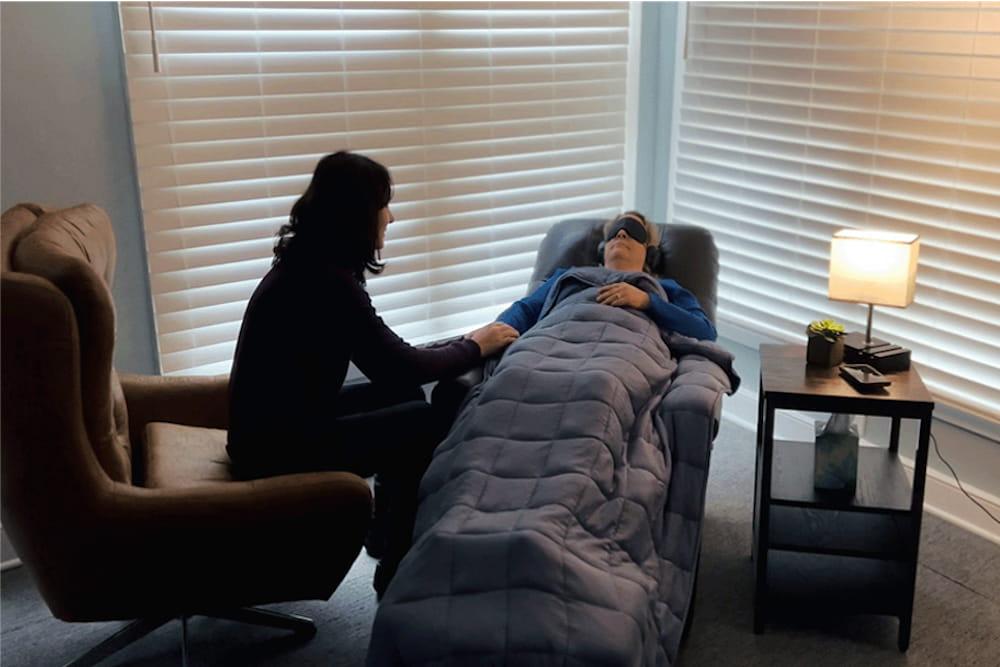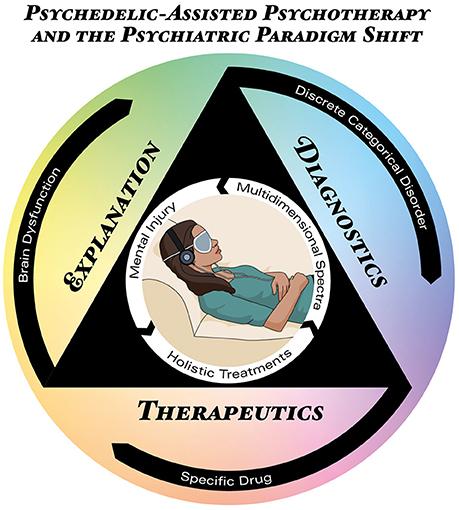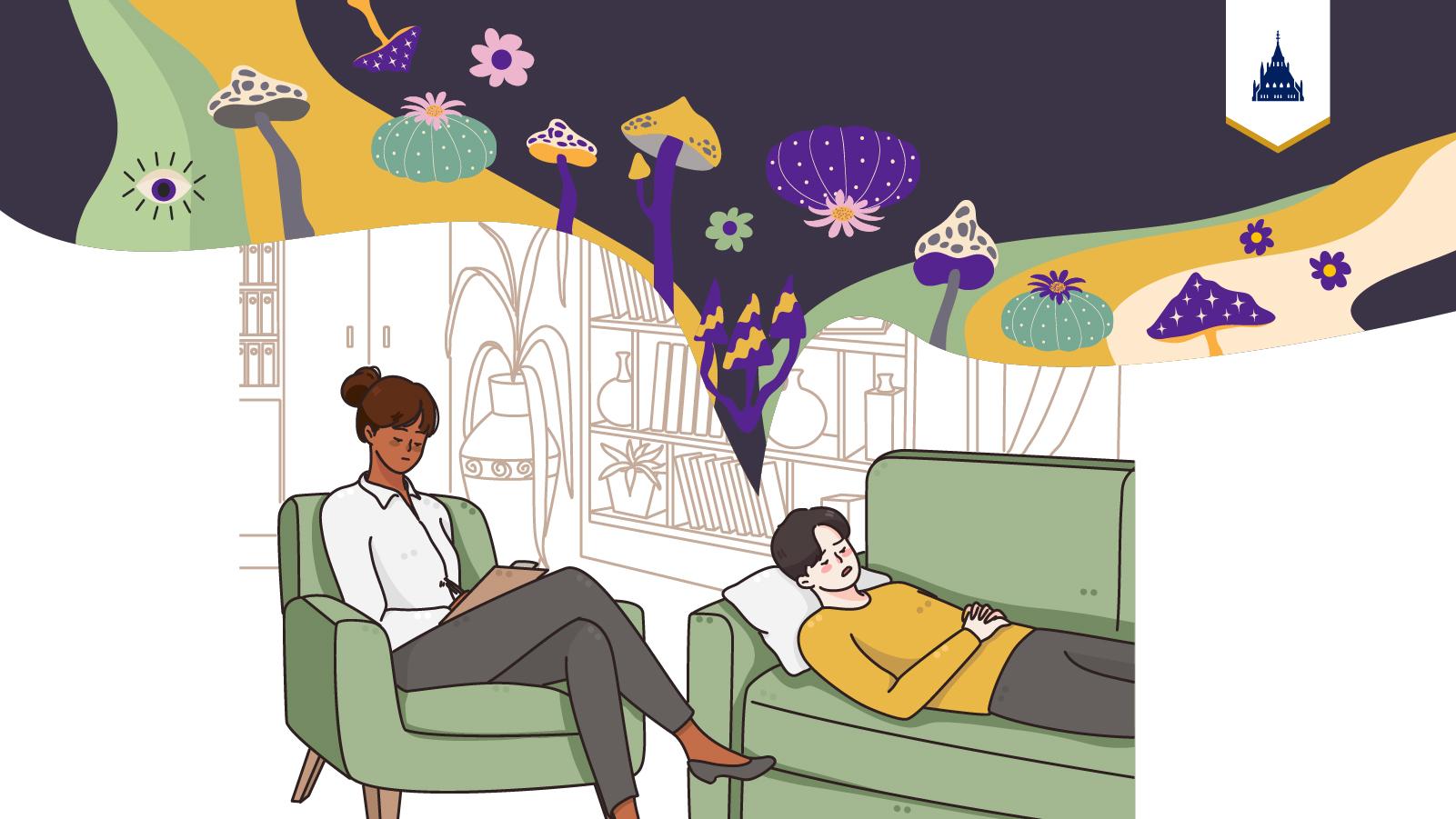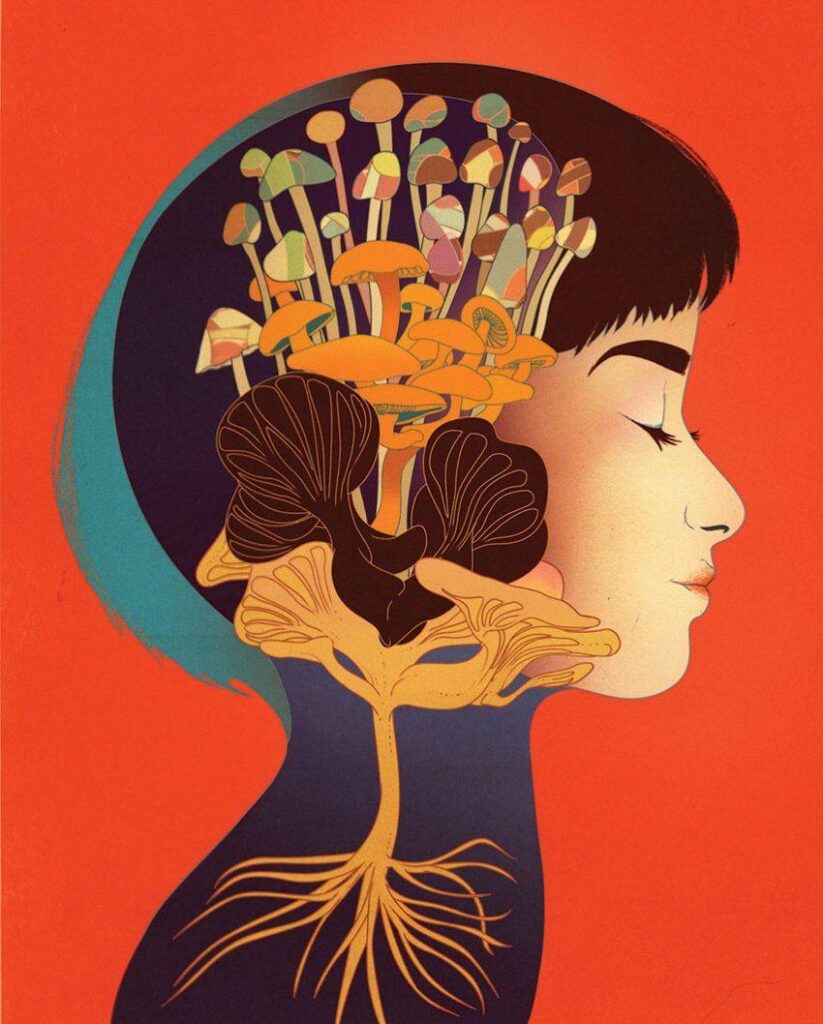In recent years, the realm of mental health treatment has witnessed a curious resurgence of an old yet unconventional approach: psychedelic-assisted therapy. Once relegated to the fringes of science and shadowed by stigma, substances like psilocybin and MDMA are now stepping into the spotlight, promising new avenues for healing conditions that have long resisted traditional methods. But as enthusiasm swells and headlines abound, a question lingers in the air-are these mind-altering compounds the next groundbreaking breakthrough in psychiatry, or merely another fleeting buzz in the ever-evolving landscape of therapy? This article delves into the science, the stories, and the skepticism surrounding psychedelic-assisted therapy, seeking to unravel fact from fervor.
Table of Contents
- Exploring the Science Behind Psychedelic-Assisted Therapy
- Therapeutic Benefits and Potential Risks Unveiled
- Navigating Legal and Ethical Landscapes
- Integrating Psychedelic Therapy into Traditional Mental Health Care
- Guidelines for Safe and Effective Use in Clinical Settings
- Frequently Asked Questions
- Insights and Conclusions
Exploring the Science Behind Psychedelic-Assisted Therapy
At the core of psychedelic-assisted therapy lies a fascinating interplay between neurochemistry and consciousness. Psychedelic compounds such as psilocybin, MDMA, and LSD interact primarily with serotonin receptors, especially the 5-HT2A receptor. This interaction is believed to disrupt default neural pathways, enabling the brain to form new connections and break free from rigid patterns associated with mental health disorders. The result? A potential rewiring of thought processes that can foster profound emotional breakthroughs.
Studies employing advanced neuroimaging techniques, including fMRI and PET scans, reveal that psychedelics reduce activity in the brain’s default mode network (DMN). This network is often linked to self-referential thoughts and rumination-key players in conditions like depression and anxiety. By temporarily quieting the DMN, patients report experiences of ego dissolution and enhanced emotional openness, which therapists harness to promote healing.
The therapeutic process is not just about the substance itself but also the context in which it is administered. Guided sessions with trained professionals provide a safe container, where patients can explore their subconscious without fear. This integration of experience is crucial, as it helps translate non-ordinary states of consciousness into lasting psychological insights.
- Neuroplasticity: Psychedelics boost the brain’s ability to reorganize and adapt.
- Emotional processing: Enhanced access to repressed memories and emotions.
- Therapeutic context: Safety and guidance amplify positive outcomes.
| Compound | Primary Effect | Therapeutic Use |
|---|---|---|
| Psilocybin | Serotonin receptor agonist | Depression, anxiety |
| MDMA | Increases serotonin, dopamine | PTSD, social anxiety |
| LSD | Alters perception and cognition | Addiction, cluster headaches |

Therapeutic Benefits and Potential Risks Unveiled
Psychedelic-assisted therapy has emerged as a promising frontier in mental health treatment, showing potential to revolutionize how we approach conditions like depression, PTSD, and anxiety. Clinical trials reveal that substances such as psilocybin and MDMA can catalyze profound psychological insights and emotional breakthroughs when combined with guided therapy. Patients often report lasting improvements in mood, cognition, and emotional resilience, suggesting these compounds do more than just alleviate symptoms-they may help rewire entrenched neural pathways.
However, this therapeutic promise comes with important caveats. The intensity of psychedelic experiences can trigger unpredictable emotional responses, especially in individuals with a history of psychosis or unstable mental health. Without proper screening and professional supervision, these sessions might heighten anxiety or induce disorientation rather than healing. Moreover, the long-term effects are still under rigorous study, leaving some uncertainty about potential risks.
To better understand the balance of benefits and risks, consider the following:
- Potential Benefits: Enhanced emotional processing, reduced symptoms of depression, increased openness and creativity.
- Potential Risks: Psychological distress, possible exacerbation of underlying mental disorders, legal and ethical concerns.
- Contextual Factors: Quality of therapeutic environment, dosage control, therapist expertise.
| Aspect | Therapeutic Effects | Risks |
|---|---|---|
| Emotional Processing | Facilitates release of repressed trauma | Overwhelming emotional flood |
| Neuroplasticity | Promotes brain rewiring and flexibility | Unknown long-term changes |
| Therapeutic Setting | Provides safety and support | Inadequate supervision risks harm |

Navigating Legal and Ethical Landscapes
The resurgence of psychedelic-assisted therapy has ignited passionate debates, not only about its clinical potential but also about the intricate web of legal and ethical considerations it entails. As governments and regulatory bodies grapple with evolving research, the legal status of substances like psilocybin and MDMA remains a patchwork of restrictions and allowances. This inconsistency creates a delicate environment where practitioners must navigate cautiously, balancing innovation with compliance.
Ethical concerns extend beyond legality, touching on patient safety, informed consent, and cultural sensitivity. Therapists are tasked with ensuring that participants fully comprehend the risks and benefits, especially given the altered states of consciousness induced during sessions. Moreover, there is a growing call to respect indigenous knowledge and traditions from which many psychedelic practices originate, avoiding cultural appropriation while honoring ancestral wisdom.
- Regulatory challenges: Varied international laws and slow policy reforms
- Patient rights: Ensuring clear, transparent consent processes
- Cultural respect: Integrating indigenous practices ethically
- Clinical oversight: Maintaining rigorous standards for safety and efficacy
Consider this simplified legal landscape overview:
| Region | Legal Status | Therapy Access | Notes |
|---|---|---|---|
| United States | Controlled (Schedule I) | Limited clinical trials & expanded access programs | FDA breakthrough therapy designation for MDMA |
| Canada | Restricted medical exemptions | Special access program permits use in select cases | Growing acceptance in mental health treatment |
| Netherlands | Psilocybin truffles legal | Therapeutic retreats available but unregulated | Tourism-driven market with few clinical services |
| Brazil | Ayahuasca legal for religious use | Therapies intertwined with spiritual practices | Unique cultural and legal landscape |
Ultimately, the path forward demands an adaptive legal framework that champions scientific rigor, ethical mindfulness, and cultural respect. It’s a balancing act that will define whether psychedelic-assisted therapy emerges as a genuine breakthrough or remains mired in controversy and confusion.
Integrating Psychedelic Therapy into Traditional Mental Health Care
Blending psychedelic therapy with conventional mental health practices is no simple feat, yet the potential benefits make it a compelling frontier. The challenge lies in harmonizing these two worlds-one rooted in decades of clinical rigor, the other blossoming from renewed cultural and scientific interest in substances like psilocybin and MDMA. Rather than viewing them as opposing forces, a collaborative approach can harness the strengths of both modalities, creating a more holistic treatment framework.
Key considerations for integration include:
- Training and Education: Clinicians must be equipped with specialized knowledge about psychedelic substances, their effects, and therapeutic protocols.
- Safety Protocols: Establishing guidelines for screening, dosage, and monitoring to minimize risks and maximize therapeutic outcomes.
- Regulatory Compliance: Navigating evolving legal landscapes to ensure treatments are ethically and legally sound.
- Patient-Centered Care: Emphasizing informed consent, cultural sensitivity, and individualized treatment plans.
Successful integration also demands a shift in perception within the mental health community. Psychedelic-assisted therapy is not a panacea but rather a tool that, when combined with talk therapy, medication, and other evidence-based practices, can enhance healing. Early adopters report improved patient engagement and breakthroughs in treatment-resistant cases, signaling a promising avenue for future research and clinical application.
| Aspect | Traditional Care | Psychedelic Therapy | Integration Benefit |
|---|---|---|---|
| Approach | Symptom management | Experiential healing | Comprehensive recovery |
| Duration | Ongoing, long-term | Short, intensive sessions | Optimized treatment timelines |
| Therapist Role | Directive, supportive | Facilitator, guide | Enhanced therapeutic alliance |
| Patient Experience | Analytical, verbal | Sensory, emotional | Deeper self-awareness |

Guidelines for Safe and Effective Use in Clinical Settings
To harness the potential of psychedelic-assisted therapy responsibly, clinical settings must prioritize structured protocols that emphasize patient safety and therapeutic efficacy. This begins with comprehensive screening processes, ensuring individuals with contraindications-such as a history of psychosis or certain cardiovascular conditions-are carefully excluded to minimize risks.
Preparation and integration sessions are equally vital. Patients should receive thorough counseling before the experience to set intentions, and aftercare support to help process insights gained during sessions. This holistic approach transforms transient psychedelic effects into meaningful, lasting therapeutic outcomes.
- Qualified facilitators: Only licensed therapists trained in psychedelic modalities should conduct sessions.
- Controlled environment: A calm, safe space designed to reduce anxiety and promote trust.
- Dosage precision: Strict adherence to evidence-based dosing protocols tailored to individual needs.
| Key Element | Implementation | Benefit |
|---|---|---|
| Screening | Psychological and medical evaluation | Reduces adverse events |
| Therapist Training | Certification in psychedelic therapy | Enhances session safety |
| Session Environment | Calm, private rooms with minimal stimuli | Improves patient comfort |
| Aftercare | Follow-up counseling and integration | Supports long-term healing |
Frequently Asked Questions
Q&A: Psychedelic-Assisted Therapy – Breakthrough or Buzz?
Q1: What exactly is psychedelic-assisted therapy?
A1: Psychedelic-assisted therapy combines the use of psychedelic substances-such as psilocybin, MDMA, or LSD-with guided psychotherapy. The idea is to harness the mind-altering effects of these compounds to facilitate deep psychological insights, emotional breakthroughs, and healing under professional supervision.
Q2: Why are psychedelics suddenly back in the spotlight?
A2: After decades of prohibition and stigma, recent scientific studies have reignited interest by demonstrating promising results in treating conditions like PTSD, depression, and anxiety. Regulatory agencies have even granted “breakthrough therapy” designations to some psychedelic compounds, signaling a potential shift in medicine.
Q3: Are these therapies proven to work?
A3: Early clinical trials have shown encouraging outcomes, with some patients reporting significant relief from symptoms that were resistant to traditional treatments. However, larger-scale studies and long-term data are still needed to fully establish efficacy and safety.
Q4: What makes psychedelic-assisted therapy different from conventional psychotherapy?
A4: Unlike standard talk therapy, psychedelic-assisted therapy involves an altered state of consciousness that can dissolve mental barriers and foster profound emotional experiences. This can accelerate therapeutic progress but also requires careful preparation, monitoring, and integration sessions to process the experience.
Q5: Is it safe to use psychedelics in therapy?
A5: When administered in controlled, clinical settings with trained professionals, psychedelics have shown a strong safety profile. Nonetheless, they are not risk-free-potential psychological distress or adverse reactions can occur, particularly without proper screening and support.
Q6: Who might benefit most from psychedelic-assisted therapy?
A6: Individuals with treatment-resistant mental health conditions-such as severe depression, PTSD, or end-of-life anxiety-may find this approach especially helpful. However, it is not suitable for everyone, and careful assessment is essential.
Q7: What are the main criticisms or concerns about psychedelic-assisted therapy?
A7: Skeptics caution against hype and over-optimism, warning that media coverage can sometimes exaggerate benefits while downplaying risks. Ethical concerns, regulatory hurdles, and the potential for misuse also fuel debate around this emerging field.
Q8: Could psychedelic-assisted therapy become mainstream?
A8: It’s possible, but widespread adoption depends on continued research, regulatory approval, and the establishment of standardized protocols. If these hurdles are overcome, psychedelic-assisted therapy could become a valuable tool in the mental health arsenal, complementing existing treatments.
Q9: How can someone learn more or get involved?
A9: Interested individuals should seek information from reputable sources, clinical trial registries, or licensed practitioners. Advocacy groups and scientific organizations often provide educational resources. Importantly, self-medicating with psychedelics outside of clinical settings is strongly discouraged.
Q10: So, is psychedelic-assisted therapy a breakthrough or just buzz?
A10: The answer lies somewhere in between. It represents a groundbreaking frontier with real therapeutic potential, but also faces significant challenges and unanswered questions. Time, rigorous science, and responsible application will determine if it evolves from buzz to bona fide breakthrough.
Insights and Conclusions
As the sun sets on decades of skepticism and stigma, psychedelic-assisted therapy stands at the crossroads of medicine and mystery. Whether it ultimately proves to be a groundbreaking breakthrough or fades into the background as a passing buzz remains to be seen. What is certain, however, is that this emerging field challenges us to rethink not only how we treat the mind but also how we understand consciousness itself. In the delicate dance between hope and hype, the next chapters of research will tell if psychedelics are the key to unlocking new healing or simply a fascinating detour on the journey toward mental wellness.

